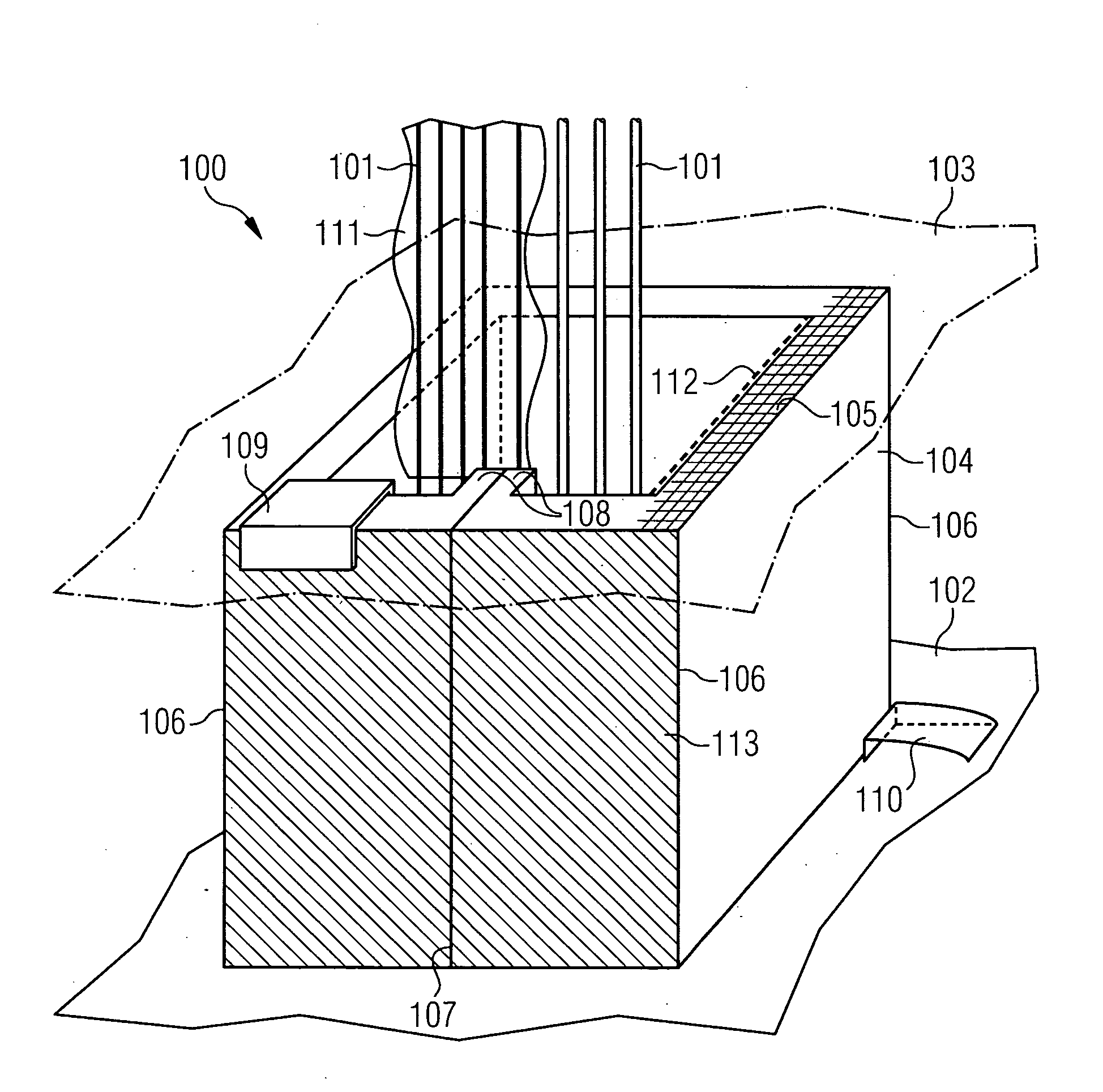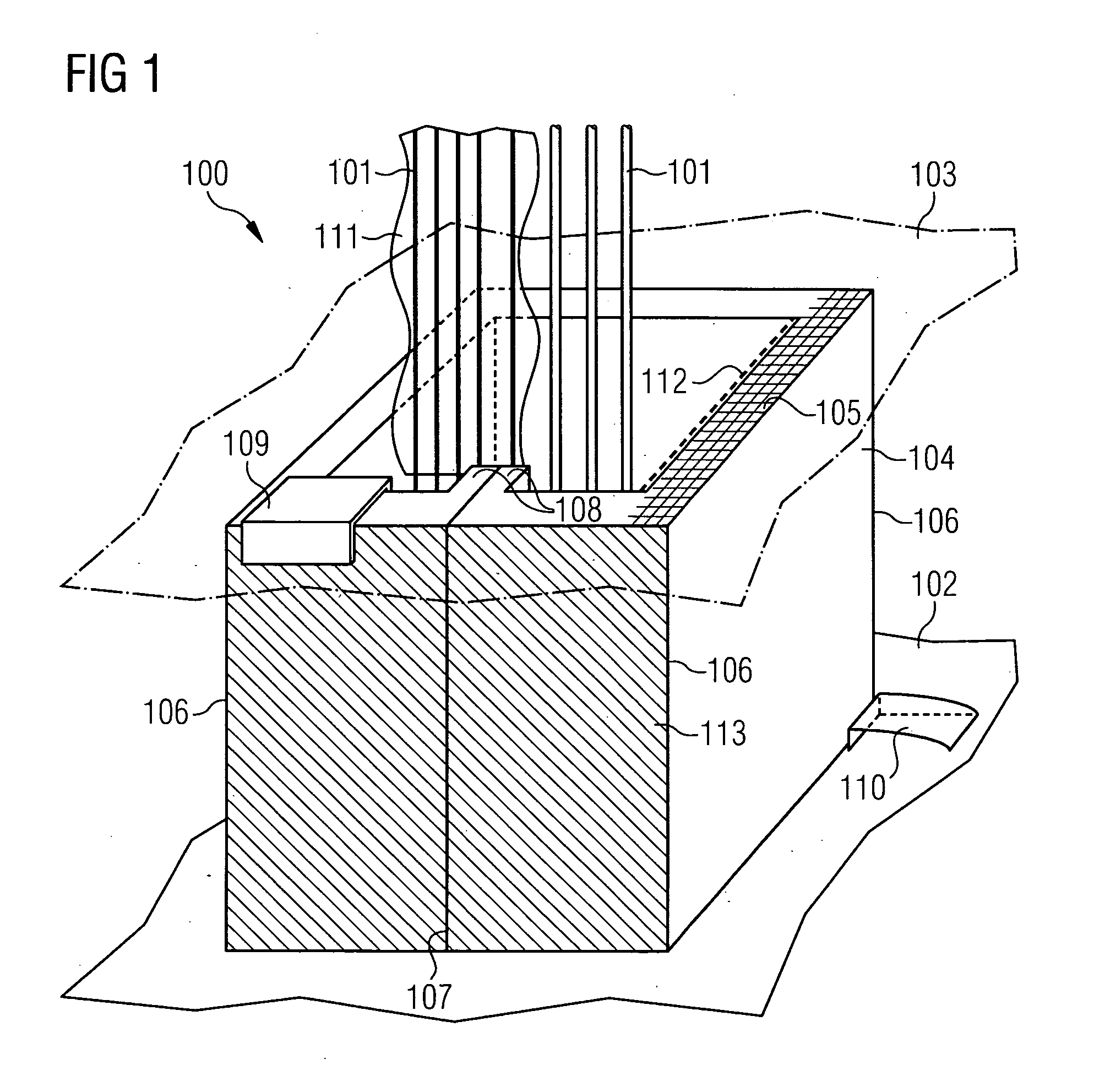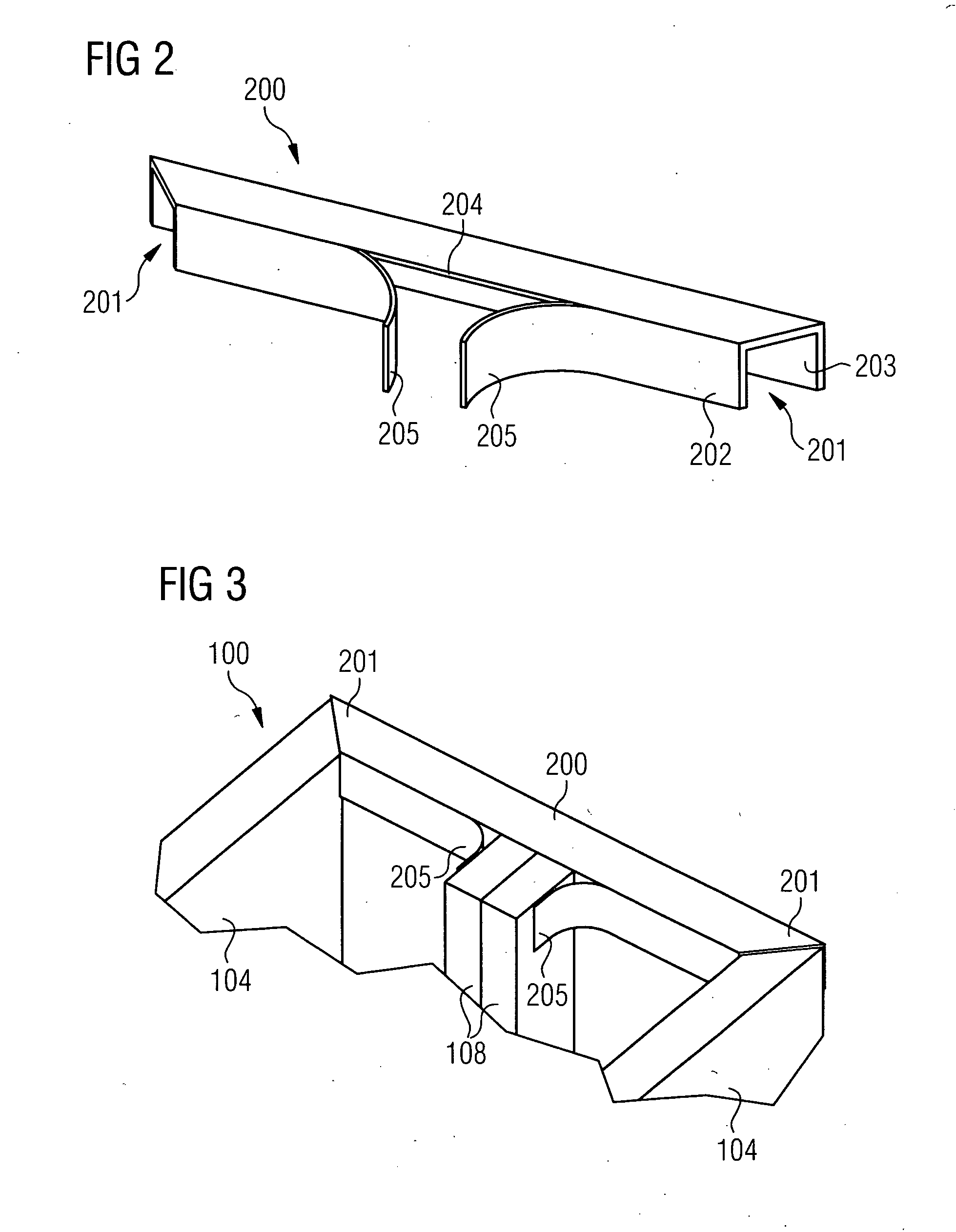Pipe/cable enclosure and method for enclosing pipes and cables
a technology of enclosure and pipe, which is applied in the direction of machine supports, other domestic objects, mechanical apparatus, etc., can solve the problems of transportation costs and the use of lightweight folding wall elements, and achieve the effects of reducing or preventing the vibration of the enclosure resting on the housing, good stability, and high strength
- Summary
- Abstract
- Description
- Claims
- Application Information
AI Technical Summary
Benefits of technology
Problems solved by technology
Method used
Image
Examples
Embodiment Construction
[0026]FIG. 1 is a schematic drawing of an exemplary pipe / cable enclosure 100. Pipes and cables 101 run between a housing 102 of a medical diagnostic device and a ceiling 103 of a room in which the medical diagnostic device is installed. The pipe / cable enclosure 100 comprises a wall element 104 made from a lightweight material and has an internal honeycomb structure 105 which structurally strengthens the wall element. The wall element 104 preferably comprises corrugated paperboard, the ridges of an internal fluted structure running essentially perpendicular to the housing 102. The corrugated board is, for example, 5-ply with two outer and one inner flat layer and two intermediate fluted layers, with a thickness of 5-6 mm. The corrugated board is pre-treated, e.g. impregnated with synthetic resin, to increase the moisture resistance of the corrugated board. The pipes and cables 101 can include pipes transporting compressed gaseous helium for cooling, which can cause corresponding cond...
PUM
 Login to View More
Login to View More Abstract
Description
Claims
Application Information
 Login to View More
Login to View More - R&D
- Intellectual Property
- Life Sciences
- Materials
- Tech Scout
- Unparalleled Data Quality
- Higher Quality Content
- 60% Fewer Hallucinations
Browse by: Latest US Patents, China's latest patents, Technical Efficacy Thesaurus, Application Domain, Technology Topic, Popular Technical Reports.
© 2025 PatSnap. All rights reserved.Legal|Privacy policy|Modern Slavery Act Transparency Statement|Sitemap|About US| Contact US: help@patsnap.com



